#CircularEconomy
Text
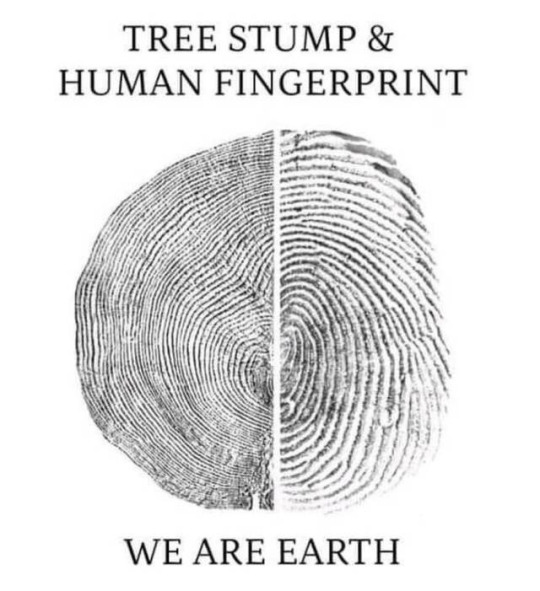
#weareearth#earthlings#connectedtonature#interconnectedness#oneplanet#motherearth#planethealth#environmentalism#sustainability#ecoliteracy#climatechange#conservation#regenerativeagriculture#renewableenergy#circulareconomy#protectingourplanet#ecowarrior#savetheplanet
21 notes
·
View notes
Text
🚀 🛍️ EcoBag Roll RZFD-330D - Máquina para Produção de Sacos e Sacolas de Papel Alimentada por Bobina ✨🤖 AUTOMÁTICAS | PRODUTIVAS | ECOLÓGICAS 🌱💡 Saiba mais: https://www.apolo.com.br/ECOBAG 📞 WhatsApp (11) 3164-9400 💬 Link: https://www.apolo.com.br/WhatsApp
Descubra a inovação com as máquinas EcoBag Roll, alimentadas por bobinas para produzir sacos e sacolas de papel com uma pegada ecológica mínima! 🌟 Perfeitas para negócios que valorizam a sustentabilidade, essas máquinas são ideais para embalagens de alimentos, compras no varejo, além de aplicações farmacêuticas e industriais. Com a EcoBag Roll, você se alia à natureza e contribui para um planeta mais verde e sustentável! 🍃🌏
🤖 Máquinas Totalmente Automáticas: Inteligência e Eficiência ao Seu Alcance
Com tecnologia de ponta e automação avançada, as máquinas EcoBag Roll são um verdadeiro salto no mundo da produção de sacos de papel. 🚀 Enquanto o mundo se despede das sacolas plásticas, nós lideramos a revolução com sacolas de papel! Essas máquinas não só chamam a atenção pela inovação, mas também pela capacidade de atender às crescentes demandas de fabricação. Com a EcoBag Roll, você está à frente do mercado, pronto para a era do papel! 🌟
Cresça seu Negócio com a EcoBag Roll: Inovação ao seu Alcance!
Seja você um empreendedor iniciando no ramo de fabricação de sacolas e sacos de papel, ou alguém buscando expandir sua produção, as máquinas EcoBag Roll são a chave para o crescimento contínuo e sustentável do seu negócio. Invista na EcoBag Roll e veja seu negócio prosperar com a força da inovação e da sustentabilidade! 🛍️
#sustentabilidadeambiental#logistica#circulareconomy#packaging#sustentabilidade#alimentos#meioambiente#sustainablepackaging#packaginginnovations#paper#ambiente#embalagens#reciclagem#ecommercebrasil#embalagem#grafica#ecologia#papel#natureza#offset#caixa#sustentável#biodiversidade#reciclar#lojas#boutiques#reciclado#comercioeletronico#impressaodigital#industriagrafica
2 notes
·
View notes
Text
The Future Is Now
So much YES. Would love to connect with fellow enthusiasts and professionals working in the field, and engage more actively, bringing in my own expertise of working in high end interiors and architecture. If that's you, please reach out, boost, connect.
youtube
We OBVIOUSLY can't 'keep on keeping on' and design our built environment like we don't know how fundamentally flawed our design principles and construction methods are.
Let's embrace new aesthetics and look forward, not back. Bauhaus was relevant at the time, it's history now. Let's move on. Let's question every single choice in the design process and make better decisions. Educate our clients. Throw those outdated concepts overboard of what is aesthetically pleasant, what is deemed high-end.
Nobody will enjoy marbled lobbies, airconditioned greenhouse towers and concrete buildings on a dead planet. The future is now. Let's design and build it together!
#architecture#design#InteriorDesign#InteriorArchitecture#sustainability#LifeCycle#bamboo#BambooDesign#CircularDesign#CircularEconomy#DonutEconomy#Adobe#RammedEarth#WattleAndDaub#Enginneering#ChiangMai#ChiangMaiLifeArchitects#Permaculture#BioChar#WoodVinegar#CarbonSequestering#OrganicDesign#Construction#EcoAwareness#Ecology#BambooU#Youtube
4 notes
·
View notes
Text
IFAT INDIA 2023
Stepping into 𝐈𝐅𝐀𝐓 𝐈𝐍𝐃𝐈𝐀 𝟐𝟎𝟐𝟑 at the Bombay Exhibition Centre (𝐍𝐄𝐒𝐂𝐎), Mumbai, don't miss the opportunity to witness the brilliance of 𝐌𝐞𝐦𝐛𝐫𝐚𝐧𝐞 𝐃𝐞𝐜𝐨𝐫𝐬-where every stand is a masterpiece, and every visit is an adventure into the future of design. Contact to let us weave the magic of innovation and aesthetics into your next exhibition.
𝙂𝙞𝙫𝙚 𝙪𝙨 𝙖 𝙘𝙖𝙡𝙡 𝙩𝙤𝙙𝙖𝙮
📞 +91-8800569899
📧 [email protected]
🌐 www.membranedecors.com
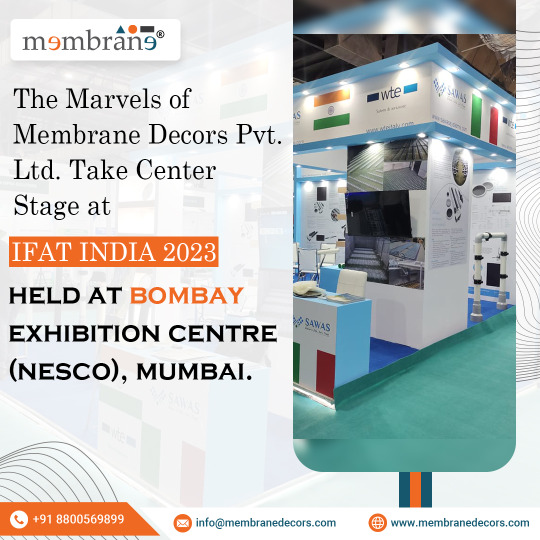
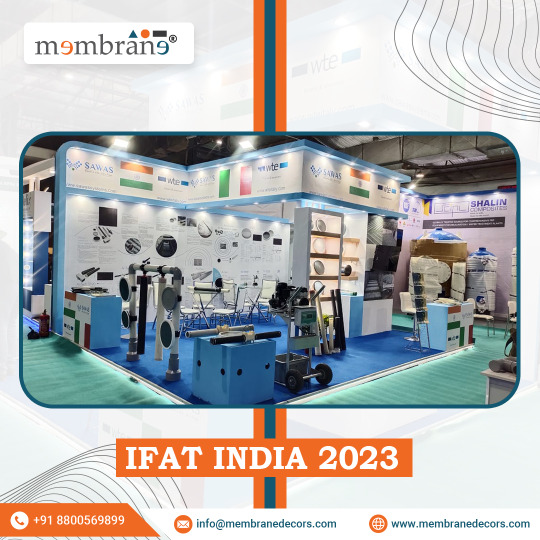

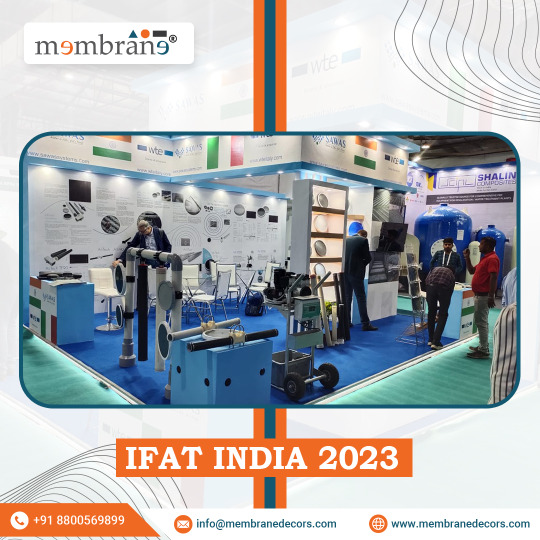



#ifatindia2023#WaterManagementSolutions#WaterInnovation#SustainableSolutions#wastewatertreatment#wastetoenergy#WasteManagement#CircularEconomy#SustainabilityEconomy#Sustainability#InvestInOurPlanet#EarthDay#EarthDayEveryDay#ClimateChange#Environment#TakeAction#ItsNotADayItsAMovement#GreenCities#ClimateLiteracy#NESCO
2 notes
·
View notes
Text
Do you know the E-Waste Management Rules 2016?
Watch this video carefully and learn more to Click here.
https://bit.ly/3EAjG8I
#ewaste#recycling#electronicwaste#ewasterecycling#recycle#industrialwaste#itrecycling#metalscrap#officebin#sustainability#reuse#environment#waste#wastemanagement#circulareconomy#computerrecycling#electronics#laptoprecycling#Rekart#sustainable#sustainabledevelopment#ecofriendly#ewastecompanyinindia
2 notes
·
View notes
Text

New feature added - Chat! | Recycling Market News
Now, you can communicate directly with Recyclers on our platform (Recycling Market News) and grow your network.
#Recyclers#CircularEconomy#RecyclingCompanies#WasteManagement#Environment#Plastics#Metal#Scrap#Cardboard#Paper#WEEE#Textiles#Wood#Glass#OceanCleanUp#Closeloop#oceanplastic#oceancleanup#oceanpollution#recycle#metalrecycling#recyclingindustry#paperindustry#paperpackaging#papermills#papermachine#Packaging#packagingdesign#packagingsolutions#packagingindustry
2 notes
·
View notes
Photo

A stunning piece from our Revived pre-worn collection. A Thedi Leathers Cafe Racer style biking jacket with incredible details and just superbly constructed. Very little wear from the previous owner - really excellent condition. Size Medium , but a slim Medium. Check our website product page for measurements. Cost €1,600 new… now at €595 🏍💪 🇬🇷 #caferacer #caferacerstyle #thedileathers #motorcycle #moto #motorcyclejacket #bikerjacket #leatherjacket #circulareconomy #circularfashion https://www.instagram.com/p/CdGJn0-otBi/?igshid=NGJjMDIxMWI=
#caferacer#caferacerstyle#thedileathers#motorcycle#moto#motorcyclejacket#bikerjacket#leatherjacket#circulareconomy#circularfashion
5 notes
·
View notes
Text

In celebration of Earth Month, we will be sharing a series of recent interviews that tie directly into the environmental mission of Down to Earth Markets. This week we are pleased to feature a chat with our very own Gabi Mateo-Saja, Down to Earth’s Market Operations Associate. Gabi managed our Ossining Farmers Market in 2019-2020 and rejoined the Down to Earth Markets team in her current role last September. She has since embarked on several green initiatives for the company leveraging her background, experience and degree in sustainability.
You have a master’s degree in Sustainability from Bard College. Is there a particular sustainability issue that you focused on in your studies?
Gabi: I concentrated on Circular Value Chain Management and Consulting while pursuing my sustainability MBA at Bard. A circular supply chain is one that uses materials and goods for as long as possible, instead of letting them go immediately to waste. But I’ve been passionate about food justice and improving food systems since undergrad and have focused almost all my research and academic projects on understanding different aspects of our food systems over the last five years or so.

Has sustainability always been an area of interest for you? How did your interest begin?
Gabi: My mom always worked to give my siblings and me a connection to the environment and our planet. She was also very determined to ensure we followed healthy eating habits – which was very difficult to accomplish on the budget and in the time she had. Since I was born, I’ve been hearing concerns about climate change and have seen firsthand the repercussions worsen during my own lifetime. We have reached a point in our global history where we are witnessing and experiencing the effects. It’s scary and I feel very strongly about dedicating my career to working on creating a sustainable future.
Prior to joining Down to Earth Markets last September, you worked as a sustainability consultant and food systems data researcher. Are the skills and knowledge you gained in those roles transferable to the Market Operations Associate position, where you are part of the team that makes sure our markets run smoothly on-the-ground?
Gabi: My background has been very useful in giving me an outside perspective and has been a huge asset in creating solutions to some of the operational issues we encounter. I tend to look at the challenges we face through a food systems lens and try to create innovative solutions based around all the moving parts involved.
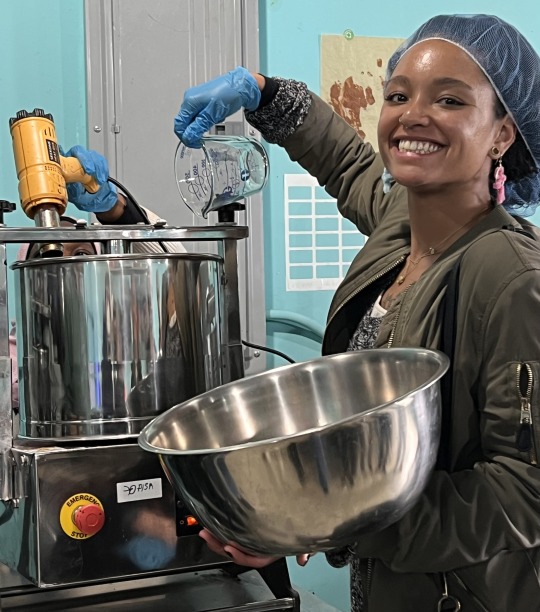
My sustainability consulting experience has been particularly useful in designing a waste tracking system for the company (more on that below). Additionally, my skills as a Food System Data Researcher and assessing data have been useful in conducting data analysis for the operations team to use in making decisions real-time. I’ve leveraged it to clean up the ways we collect data, streamline our analysis, enhance the information we collect, and to work with the Operations Manager to create customer surveys that expand our knowledge about the communities we serve.
What is your definition of sustainability in the context of business? How can the two coexist?
Gabi: I’ve found that I’m continually refining and expanding my definition of sustainability. Simply put, I believe that sustainability in a business context means providing value without causing harm or inequity. It means protecting resources and people while contributing to a successful future for all.

It’s a common reference, but I’m fond of Ray Anderson’s quote about profit and business, “Business makes a profit to exist. Surely it must exist for some higher, nobler purpose than that.” It is completely possible for the two to coexist., I am far from having all the answers about how to get there, but we need to move away from a greed-based culture. Businesses should operate to improve the lives of the people they employ, their customers, and the communities in which they operate. Of course, we need to earn a profit to accomplish this, but it shouldn’t be at the expense of others or our environment.
What are some sustainability initiatives you’ve undertaken since joining Down to Earth?
Gabi: My first project was diverting as much of what I’m calling “DTE’s legacy waste” from the landfill. Waste generation is an unavoidable part of our business, at least for the time being, so we need to find responsible ways to get rid of things we no longer have use for. I was able to divert 79% of this accumulated gear and equipment to be repurposed and reused! An old shelf got spruced up, kitchen materials were donated to begin a new life, and lots of sand and gravel went towards repairing a chicken coop and shoring up outdoor gardening supply spaces.
For Earth Day this year, I created several activities and informational pieces for our markets. I researched tips and tricks for reducing food waste, and fast facts to educate our shoppers about the issue and what they can do about it. Plus, I found a fun way to repurpose old chalk bits by upcycling them into chalk paint for kids to decorate the asphalt with, and used sampling materials that were no longer usable for food consumption to mix up the paint in.

The operations team has also been hard at work on a customer survey and points of research to better understand our shoppers, their needs, and the diverse communities in which we operate. For instance, we may discover that it would make sense to offer our marketing materials and resources on SNAP/EBT in languages other than English and Spanish – we want to serve whatever the needs may be in those neighborhoods close to our markets. We want to make our best effort to improve access to fresh, high-quality foods through the avenues we can influence.
What are some lifestyle changes and habits that shoppers can adopt to honor Earth Month this year?
Gabi: Making any sustainable improvements in your everyday life is impactful, such as remembering your reusable tote bags when you shop, eating local, in-season foods, practicing no-waste cooking by using all parts of the plant or animal, and incorporating leftovers into your next meal instead of tossing them. But I believe the best thing people can do to honor our planet is to get involved in something larger than yourself! Push for more sustainability in your workplace, volunteer with a local environmental organization, get involved with your community government, attend a protest, sign a petition that pushes for a more sustainable future, and, of course, vote!
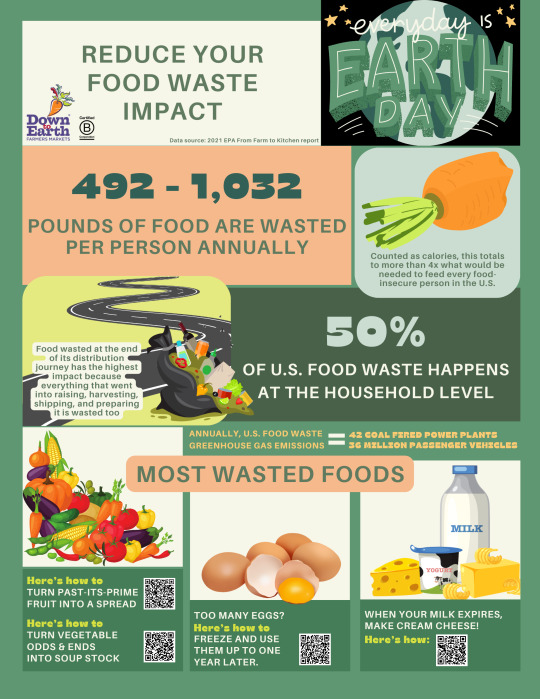
What else do you hope to accomplish in the future?
Gabi: In the future, I will keep working on ways for Down to Earth Markets to better understand our impact! Eventually, I hope DTEM can create a sustainability strategy to set concrete goals towards further reducing our environmental footprint and to improve upon the social value our company already provides.
Thank you, Gabi, for all you’ve done so far to improve corporate sustainability at Down to Earth and we can’t wait to see the results of the great initiatives you have coming down the pipeline.
#downtoearthmkts#farmersmarket#eatlocal#shoplocal#buylocal#farmersmarkets#eatdowntoearth#localfood#earth month#earth month 2024#sustainableliving#sustainability#zero waste#circulareconomy
0 notes
Link
#crosspost#I turned my Christmas tree into gardener’s gold…#Epic Gardening#youtube#zapier#ivys queue#2024-01-08T10:15:42Z#Composting#ChristmasTree#Sustainability#ZeroWaste#GreenLiving#OrganicWaste#EcoFriendly#NaturalResources#ReduceReuseRecycle#EnvironmentalImpact#Biodegradable#RenewableResources#WasteReduction#CircularEconomy#CarbonFootprint#soil health#Gardening#UrbanFarming#CommunityGarden#HomeComposting#ClimateAction#SustainableLiving#ResourceManagement
0 notes
Text
#SmartWasteManagement#WasteSmart#SustainableWaste#WasteTech#SmartCities#CircularEconomy#WasteInnovation#GreenTech
0 notes
Text
🌱💼 Unlocking the Potential: Finance's Role in Achieving Zero-Waste Economies 💰🌎
Hey Tumblr fam! Today, let's talk about something close to our hearts: creating a sustainable future through zero-waste economies, and the pivotal role finance plays in this journey. 🔄🌟
🔍 Understanding Zero-Waste Economies: Imagine a world where nothing goes to waste. Every resource is utilized efficiently, and waste is minimized or repurposed into valuable inputs for new products. That's the vision of a zero-waste economy, where sustainability and circularity reign supreme.
💡 How Finance Drives Change: Finance isn't just about numbers; it's a powerful force that can drive societal and environmental change. Here's how it plays a crucial role in achieving zero-waste economies:
Investment in Innovation: Finance fuels innovation by providing funding for research and development of sustainable technologies and practices. Whether it's investing in waste-to-energy solutions or supporting circular business models, financial resources can catalyze transformative change.
Incentivizing Sustainability: Through financial instruments like green bonds and sustainable loans, finance incentivizes businesses to adopt eco-friendly practices. Companies that prioritize waste reduction and resource efficiency can access capital at favorable terms, encouraging sustainable growth.
Facilitating Infrastructure Development: Building the infrastructure for a circular economy requires significant investment. From recycling facilities to sustainable supply chains, finance plays a vital role in funding the development of essential infrastructure needed to support zero-waste initiatives.
Risk Management: Waste and environmental degradation pose significant risks to businesses and communities. Finance helps mitigate these risks by integrating environmental, social, and governance (ESG) factors into investment decisions. By considering the long-term sustainability of projects and companies, finance can steer capital towards more resilient and environmentally responsible endeavors.
🌍 Creating a Sustainable Future: Achieving zero-waste economies requires a collective effort from governments, businesses, and individuals. Finance acts as a catalyst for change, channeling resources towards sustainable initiatives and driving innovation in waste management and resource utilization.
💬 Join the Conversation: What role do you think finance should play in building zero-waste economies? Share your thoughts and ideas in the comments below! Let's inspire each other to create a more sustainable world. 🌿💬
#FinanceForChange#CircularEconomy#ZeroWaste#SustainableFinance#finance#thefinrate#payment gateway#fintech#financialinsights#financetalks#finance101#fintechrevolution
0 notes
Text
Last year, we had a Fireside Chat with Shamini Dhana, CEO of Dhana Inc., where she discussed her journey in sustainability and the circular economy. She explained that the circular model represents a system where products are designed and used in a way that maximizes their value and life cycle, contrasting with the traditional, linear 'take-make-dispose' model.
This insight underpins the urgency and importance of shifting towards circular fashion, emphasizing how each stakeholder in the industry, from designers to consumers, plays a crucial role in fostering a sustainable future.
Dive deeper into sustainability with exclusive content. Join the StartSomeGood network at www.startsomegood.com/network for more groundbreaking conversations like this.
0 notes
Text
🔧 Instalação da Acopladora Automática de Micro Ondulado Saphir em São Paulo, SP
Descubra a eficiência incomparável da Acopladora Automática Saphir – sua solução de alta velocidade com alimentação automática e setup rápido, ideal para o mercado de micro ondulado.
🚀 Velocidade e Precisão Excepcionais: As Acopladoras Saphir são desenvolvidas para elevar a produção de embalagens resistentes – perfeitas para produtos como sapatos, pizzas e equipamentos eletrônicos. Com sua capacidade de acoplar e reforçar materiais, essas máquinas aumentam significativamente a durabilidade do papelão micro ondulado.
🛠️ Setup Rápido e Automatizado: O tempo é precioso. Por isso, a Saphir oferece uma configuração rápida e uma alimentação totalmente automática, permitindo que sua produção flua sem interrupções.
🔶 Tecnologia Avançada de Colagem: Através de um sistema sofisticado, o papelão micro ondulado é alimentado na máquina, recebe aplicação de cola e é imediatamente acoplado com a folha impressa. Em uma única etapa, as folhas são coladas, alisadas e preparadas para corte e vinco, garantindo um acabamento impecável.
💡 Explore mais sobre essa tecnologia revolucionária: 🌐 www.apolo.com.br/SAPHIR Ou ligue: 📞 (11)3164-9400 💬 Link: https://www.apolo.com.br/WhatsApp
Transforme sua produção com a Acopladora Automática Saphir e eleve a qualidade de suas embalagens a padrões internacionais.
#drupa2024#drupa#sustentabilidadeambiental#logistica#circulareconomy#packaging#sustentabilidade#alimentos#meioambiente#sustainablepackaging#packaginginnovations#paper#ambiente#embalagens#reciclagem#ecommercebrasil#embalagem#grafica#ecologia#papel#natureza#offset#caixa#sustentável#biodiversidade#reciclar#lojas#boutiques#reciclado#comercioeletronico
1 note
·
View note
Text
Revolutionizing Environmental Conservation: The Wastematerial

At the heart of Wastematerial’s mission lies a commitment to sustainability and environmental stewardship. The E Waste Recycling Plant stands as a testament to this dedication, offering a comprehensive solution to the burgeoning e-waste crisis. Through cutting-edge technology and advanced processes, Wastematerial transforms discarded electronics into valuable resources, minimizing the environmental impact and promoting a circular economy.
One of the key features of the Wastematerial E Waste Recycling Plant is its holistic approach to e-waste management. Unlike traditional methods that often involve crude dismantling and incineration, Wastematerial employs a sophisticated system of sorting, disassembly, and material recovery. By utilizing automated machinery and specialized techniques, the plant ensures maximum efficiency and resource optimization, extracting valuable metals, plastics, and other materials from electronic devices.
Furthermore, Wastematerial prioritizes environmental responsibility throughout every stage of the recycling process. Stringent quality control measures are implemented to mitigate potential hazards and ensure compliance with regulatory standards. Hazardous components such as batteries and mercury-containing devices are safely extracted and processed, preventing them from polluting the environment or posing risks to human health.
In addition to its environmental benefits, the Wastematerial E Waste Recycling Plant also contributes to the creation of a green economy. By recovering valuable materials from e-waste, the plant generates new opportunities for sustainable manufacturing and resource conservation. Recycled metals, plastics, and rare earth elements can be reintroduced into the production cycle, reducing the reliance on finite natural resources and minimizing the carbon footprint of electronic products.
Moreover, Wastematerial fosters collaboration with local communities, governments, and businesses to promote awareness and participation in e-waste recycling initiatives. Educational programs, outreach campaigns, and public partnerships are established to empower individuals and organizations to make informed choices regarding e-waste disposal. By raising awareness about the importance of responsible recycling, Wastematerial strives to create a culture of environmental consciousness and accountability.
As a pioneering leader in e-waste recycling, Wastematerial sets a precedent for sustainable innovation and corporate responsibility. The E Waste Recycling Plant not only addresses the immediate challenges posed by e-waste but also paves the way for a greener, more sustainable future. Through its unwavering commitment to environmental conservation and community engagement, Wastematerial continues to inspire positive change and redefine the way we think about waste management.
In conclusion, the Wastematerial E Waste Recycling Plant represents a paradigm shift in the approach to e-waste management. By harnessing the power of technology and innovation, Wastematerial demonstrates that environmental sustainability and economic prosperity can go hand in hand. As we strive towards a more sustainable future, Wastematerial serves as a beacon of hope, illuminating the path towards a cleaner, greener world for generations to come.
#Wastematerial#EwasteRecycling#SustainableTech#GreenInnovation#CircularEconomy#EnvironmentalStewardship#RecycleResponsibly#GreenTechRevolution#ReduceReuseRecycle#EwasteSolution
1 note
·
View note
Text
Cobalt Market: Understanding the Role in Renewable Energy, Electric Vehicles, and Technological Advancements
The global cobalt market is expected to reach USD 25.91 billion by 2030, according to a new report by Grand View Research, Inc., expanding at a CAGR of 6.2% over the forecast period. Increasing demand for electric vehicles (EVs) is expected to propel the demand for cobalt in battery applications over the forecast period. The demand for EVs has been increasing rapidly due to concerns about climate change, rising fuel prices, and government incentives. Cobalt is a key component in the production of lithium-ion batteries used in EVs. Based on products, the cobalt oxide segment is expected to register a CAGR of 6.1%, in terms of revenue, over the forecast period. It is used as a colorant in ceramic and glass production, where it imparts a blue color to the final product.

Cobalt Market Report Highlights
The EVs application segment held the largest revenue share of over 35.0% in 2022 due to factors, including environmental concerns, government policies, technological advancements, cost savings, and increasing consumer demand
The industrial chemicals segment is expected to register a CAGR of 5.6%, in terms of revenue, over the forecast period. Cobalt oxide is used as a catalyst in a variety of chemical reactions, including the production of chemicals, fuels, and polymers. The expansion in the chemical industry is expected to drive the segment growth
The cobalt sulfate product segment held the largest revenue share of over 70.0% in 2022, and this trend is expected to continue over the forecast period. The segment growth is attributed to the high product demand from various end-use industries, such as batteries, electroplating, pharmaceuticals, and agriculture
Asia Pacific is expected to register the fastest CAGR of 6.7%, in terms of revenue, over the forecast period. The increasing demand for EVs, renewable energy storage, consumer electronics, and infrastructure development in Asia Pacific is driving the product demand in the regional market
For More Details or Sample Copy please visit link @: Cobalt Market Report
The growing demand for ceramics and glass in various industries, such as construction and electronics, is driving the demand for cobalt oxide. The superalloy application segment is expected to register high growth over the forecast years. A cobalt-based superalloy is known for its high-temperature stability, which makes it suitable for use in high-temperature applications. Thus, its unique combination of physical and chemical properties makes it an ideal material for high-temperature and high-stress applications in the aerospace, energy, and other industries. Based on region, there lies immense opportunity for the market to flourish in Europe. The growth of renewable energy sources, such as wind and solar power, is driving the demand for energy storage systems, which is propelling the production of lithium batteries that use cobalt.
As Europe aims to transition toward a cleaner energy future, the demand for renewable energy storage systems is increasing, thereby driving market growth. For instance, a comprehensive energy law package passed by the German government in April 2022 aims to increase the amount of renewable energy generated in the country by 22,000 MW from solar and 10,000 MW from wind by 2030. The market participants continue to expand their production capacities to stay ahead of the competition. For instance, in February 2023, Eurasian Resources Group announced an investment of USD 1.8 billion for doubling its output of African copper and cobalt processed at a mine near Lubumbashi, the Democratic Republic of Congo. This indicates a high demand and growing competitive rivalry.
#CobaltMarket#RenewableEnergy#ElectricVehicles#BatteryTechnology#ResourceManagement#GreenTechnology#EconomicDevelopment#EnvironmentalImpact#TechnologicalAdvancements#InvestmentOpportunities#RegulatoryCompliance#CircularEconomy#MineralResources#EnergyStorage
0 notes
Text
Nurturing Growth: A Deep Dive into Leading Indian Fertilizer Manufacturers
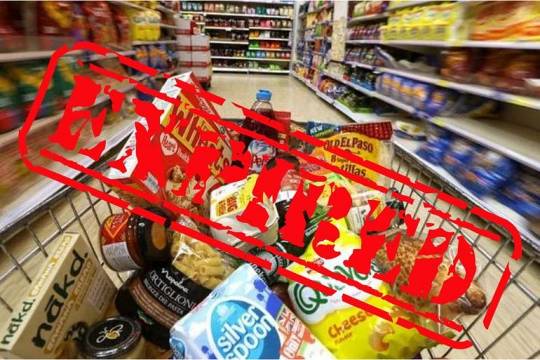
Aradhaya Food Recycle
In the realm of agriculture, the significance of fertilizers cannot be overstated. They are the lifeblood of productivity, aiding farmers in enhancing soil fertility and crop yield. In India, a country with a rich agricultural heritage, the demand for high-quality fertilizers is ever-growing. Today, we delve into the world of biggest fertilizer companies in india, shining a spotlight on the leading players in the industry, with a special focus on Aradhaya Food Recycle.
Understanding the Indian Fertilizer Landscape
India’s agriculture sector is vast and diverse, catering to the needs of a burgeoning population and serving as a backbone of the economy. Fertilizer usage plays a pivotal role in sustaining agricultural productivity, ensuring food security, and bolstering rural livelihoods. As a result, the fertilizer industry in India has witnessed steady growth over the years, propelled by factors such as government initiatives, technological advancements, and evolving farming practices.
Tata Chemicals
With a legacy spanning over eight decades, Tata Chemicals stands as a stalwart in the Indian fertilizer industry. Renowned for its commitment to sustainable practices, Tata Chemicals has pioneered the production of urea and complex fertilizers.
Noteworthy initiatives such as ‘Project Zero’ underscore Tata Chemicals’ dedication to reducing carbon emissions and promoting eco-friendly agriculture. Through strategic collaborations and investments in research and development, the company continues to spearhead innovations in fertilizer technology.
IFFCO (Indian Farmers Fertiliser Cooperative Limited)
As one of the largest cooperative societies globally, IFFCO exemplifies the power of collective action in fostering agricultural progress. Established with the vision of uplifting rural farmers, IFFCO has played a pivotal role in ensuring the availability of quality fertilizers at affordable prices.
Beyond manufacturing fertilizers, IFFCO’s initiatives encompass farmer education, soil health management, and sustainable agricultural practices. Its extensive network of cooperative societies facilitates last-mile delivery, empowering farmers across the length and breadth of India.
Coromandel International Limited
Boasting a diverse portfolio of fertilizers, crop protection, and specialty nutrients, Coromandel International Limited (CIL) occupies a prominent position in the Indian agribusiness landscape. The company’s unwavering commitment to innovation and quality has earned it a formidable reputation among farmers.
CIL’s ‘Farmer First’ approach underscores its customer-centric philosophy, wherein farmer welfare and empowerment take precedence. Through digital initiatives and agronomic services, CIL strives to enhance farmer profitability and sustainability.
Rashtriya Chemicals & Fertilizers Ltd. (RCF)
As a flagship company under the Ministry of Chemicals and Fertilizers, Government of India, RCF holds a pivotal position in the nation’s fertilizer sector. With a focus on indigenization and self-reliance, RCF has been instrumental in meeting the fertilizer requirements of Indian farmers.
RCF’s integrated manufacturing facilities, coupled with its emphasis on research and development, enable the production of a wide array of fertilizers tailored to diverse agro-climatic conditions. The company’s ‘Green Initiatives’ underscore its commitment to environmental sustainability and conservation.
National Fertilizers Limited (NFL)
With a rich legacy spanning nearly five decades, NFL has emerged as a key player in India’s fertilizer industry. Through its state-of-the-art manufacturing facilities and robust distribution network, NFL caters to the fertilizer needs of farmers across the country.
NFL’s emphasis on product diversification and technological upgradation reflects its proactive approach to meeting evolving market demands. The company’s focus on quality assurance and farmer-centric services has earned it the trust and loyalty of agricultural communities.
In conclusion, the landscape of Indian fertilizer manufacturers is characterized by a diverse array of players, each contributing uniquely to the nation’s agricultural prosperity. From established conglomerates to cooperative societies, these manufacturers embody the ethos of innovation, sustainability, and farmer empowerment. As India marches towards food security and agricultural resilience, the role of leading fertilizer manufacturers remains indispensable in nurturing growth and prosperity across the agrarian heartland.
#AgriRevolution#SustainableFarming#OrganicFertilizers#GreenTech#CircularEconomy#FarmersFirst#FertilizerInnovation#AgriculturalSustainability#AradhayaFoodRecycle#IndianAgriTech
1 note
·
View note